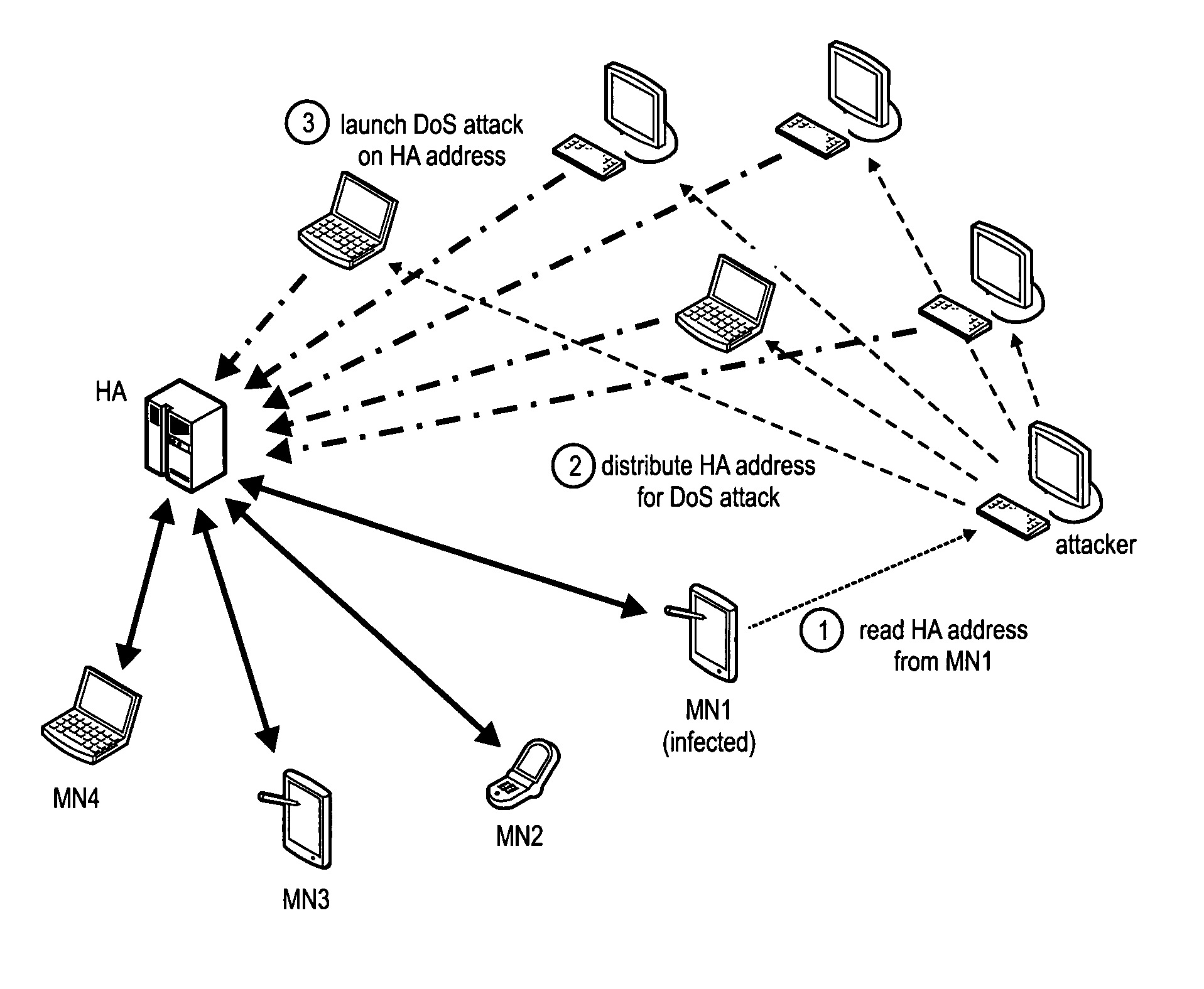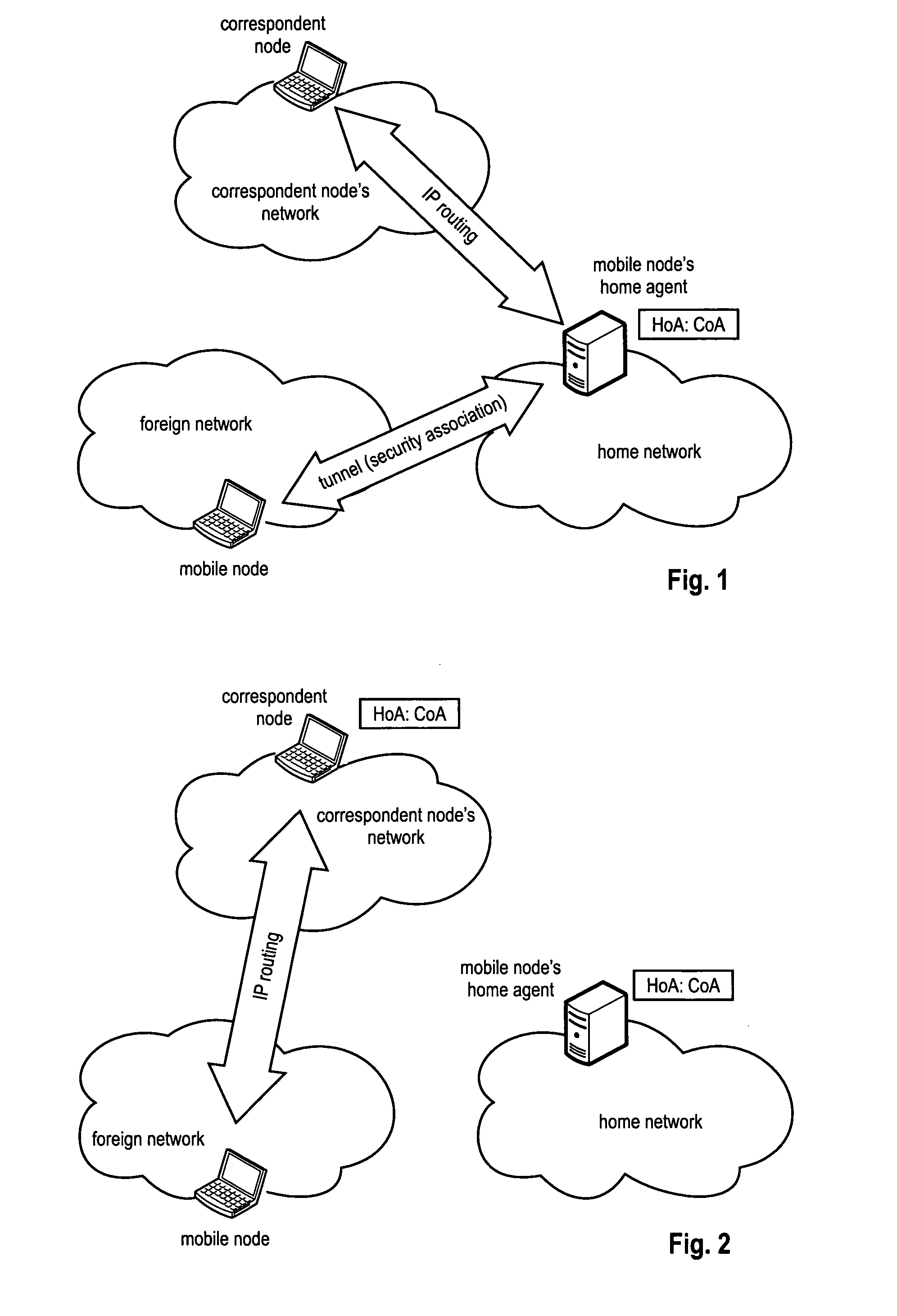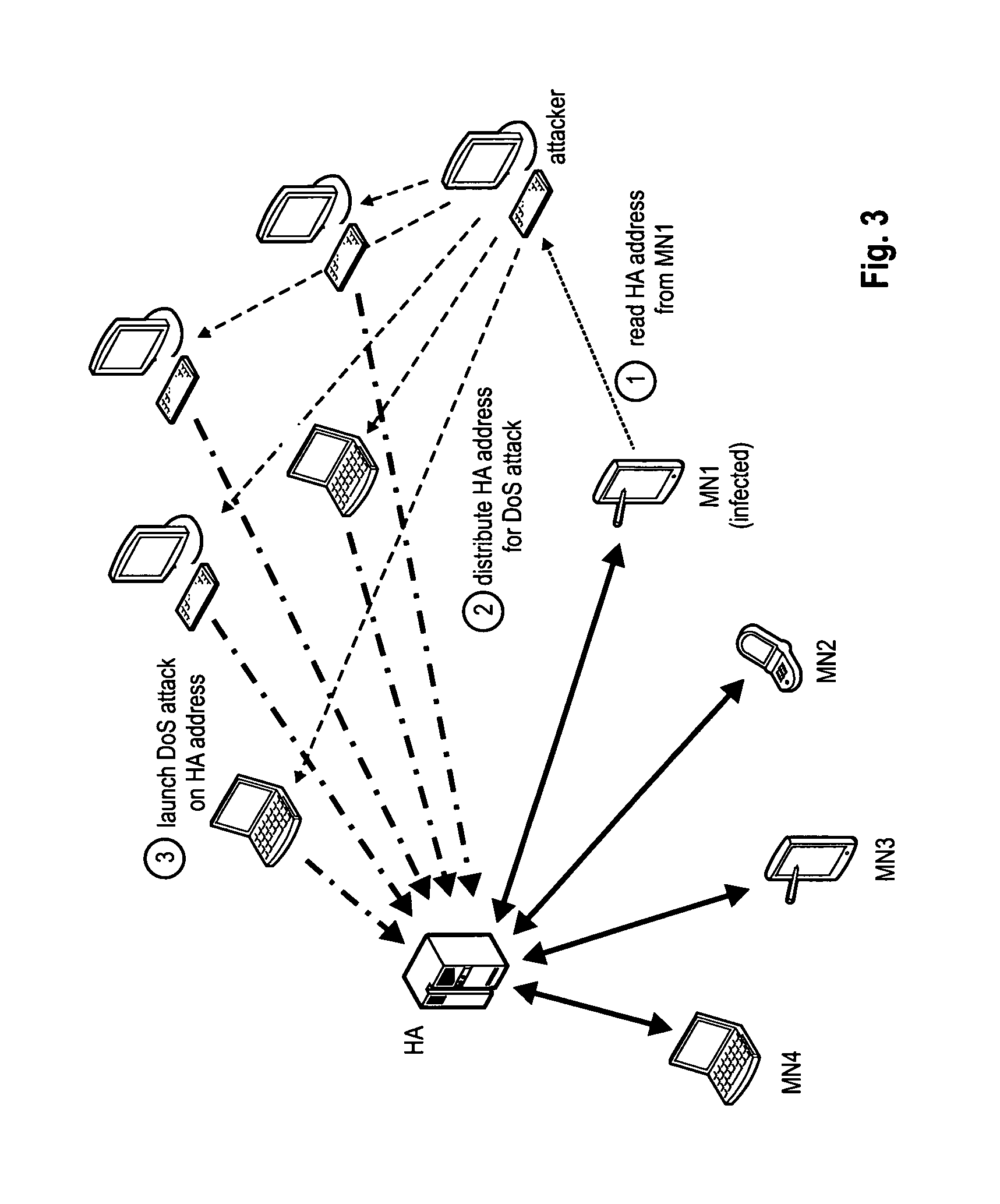Method for mitigating denial of service attacks against a home against
a technology for denying service attacks and home appliances, applied in the field of mitigating denial of service attacks against a home against, can solve the problems of high packet delay, inefficient routing, and connection breakage of one of the nodes
- Summary
- Abstract
- Description
- Claims
- Application Information
AI Technical Summary
Benefits of technology
Problems solved by technology
Method used
Image
Examples
Embodiment Construction
[0064]The following paragraphs will describe various embodiments of the invention. For exemplary purposes only, most of the embodiments are outlined in relation to a communication network using MIPv6 as discussed in the Background Art section above, but the invention is not limited to its use in this particular exemplary communication network.
[0065]Accordingly, also the terminology used herein mainly bases on the terminology used by the IETF in the standardization of Mobile IPv6. However, the terminology and the description of the embodiments with respect to and Mobile IPv6 is not intended to limit the principles and ideas of the inventions to such systems and the use of this protocol only.
[0066]The explanations given in the Technical Background section above are intended to better understand the specific exemplary embodiments described herein and should not be understood as limiting the invention to the described specific implementations of processes and functions in the mobile com...
PUM
 Login to View More
Login to View More Abstract
Description
Claims
Application Information
 Login to View More
Login to View More - Generate Ideas
- Intellectual Property
- Life Sciences
- Materials
- Tech Scout
- Unparalleled Data Quality
- Higher Quality Content
- 60% Fewer Hallucinations
Browse by: Latest US Patents, China's latest patents, Technical Efficacy Thesaurus, Application Domain, Technology Topic, Popular Technical Reports.
© 2025 PatSnap. All rights reserved.Legal|Privacy policy|Modern Slavery Act Transparency Statement|Sitemap|About US| Contact US: help@patsnap.com



